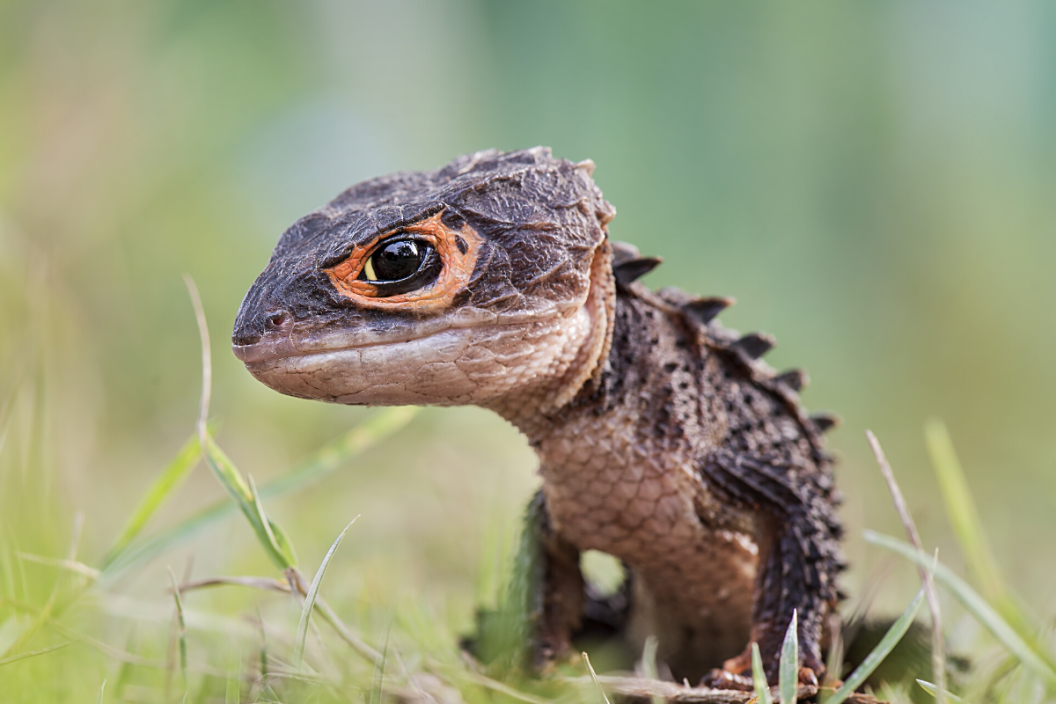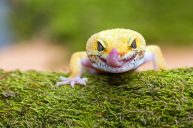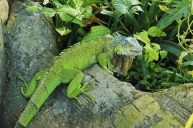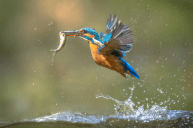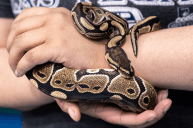A relatively recent discovered species, the Red-Eyed Crocodile Skink makes a great pet for any reptile-lover. Here's how to keep these little pet lizards happy.
Here at Wide Open Pets, we've talked about a lot of reptiles as pets in the past: geckos, snakes, even alligators, but if you are a reptile-lover and looking for your next pet, the crocodile skink is a lizard species you definitely should know about.
The Red-Eyed Crocodile Skink (scientific name: Tribolonotus Gracilis), or commonly known simply as the Crocodile Skink, is a lizard species that's native to the island of New Guinea — more precisely, Papua New Guinea (which forms a part of Indonesia). Discovered fairly recently in the early 1990s, the crocodile skink is a unique and captivating reptile that's increasing in popularity in the pet trade. Because the husbandry for these cute little guys can be quite minimal, people looking to own this tiny lizard as a good low-maintenance exotic pet is growing.
Appearance of Red-Eyed Crocodile Skinks
https://www.instagram.com/p/CH7xPZJsfLl/?igshid=p5p7u376yd01
These little lizards really do look like miniature crocodiles, hence the name. Crocodile skinks are dark gray/black to dark brown in color along with having a distinguishable orange to red-orange ring around their eyes and large, pointy, crocodile-like scales running down their back that act as their protective armor. Some have orange scales on their neck as well.
Hatchlings are 2.5 inches long and adults are 8 to 10 inches long.
Red-Eyed Crocodile Skink Care
https://www.instagram.com/p/CFSfDrlgAk-/?igshid=193jlchp0cazu
While the care sheet for this tiny lizard is not long, there are a few specific requirements these cute pet lizards need.
One of them is housing and temperature: as crocodile skinks are used to living in a tropical rainforest in the wild (and they'll use piles of rotting leaf litter as hiding spots), its home should mimic that environment as best as possible. That means, humidity levels should be monitored as these lizards require high humidity. They also need a large terrarium with a moist substrate.
Pro tip: misting your crocodile skinks and their enclosure a few times a day will give them the necessary amount of moisture and humidity, and keep the substrate from getting too dry.
According to Everything Reptiles, the use of lighting is very important for your crocodile skink as UVB lighting encourages production of Vitamin D3, which is essential for your little skink.
"As well as UVB lighting, a Red-Eyed Crocodile Skink should also have a heat lamp to create a basking spot."
When it comes to feeding your crocodile skink, these little lizards are insectivores and can be fed a variety of insects like mealworms, dubia roaches, and small crickets — waxworms can also be fed occasionally as treats. All feeder insects should be gut-loaded and also dusted with calcium and Vitamin D3 in order to supplement their diet. Also be sure to always provide a nice-sized water dish filled with fresh water, but make sure not to fill it too deep.
Red-eyed crocodile skinks will get along with crested geckos and other reptiles with similar habitat needs.
What do you think of the crocodile skink? Do you live with one? Let us know on the Wide Open Pets Facebook page!
